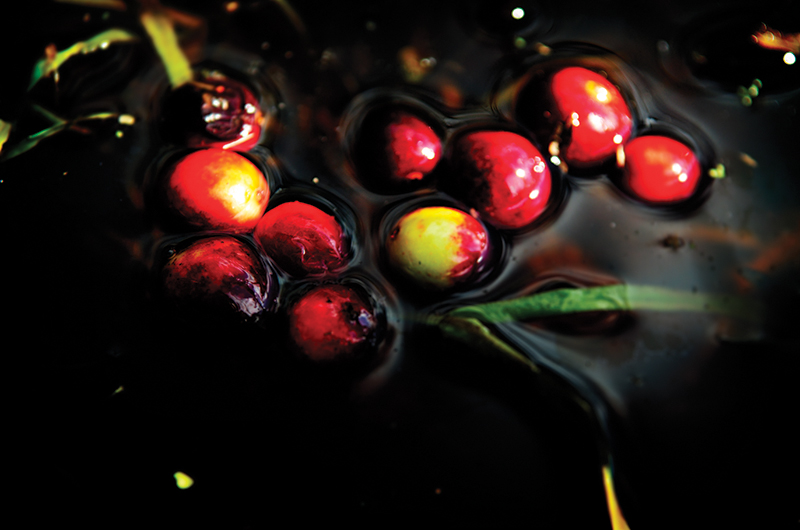Legend has it that in 1816 Henry Hall of Barnstable County cleared the brush from around some native cranberry plants, and as a result, sand from a nearby dune blew onto the plot. Henry was surprised to find that instead of the cranberries being destroyed, they actually flourished and produced a wonderful crop. And so was born the modern cultivated cranberry bog.
Over the years, the Vineyard has been home to several cranberry bogs, and thanks to the Vineyard Open Land Foundation (VOLF), an organic commercial crop is now growing on a bog that is being restored off Lambert’s Cove Road in West Tisbury.
Ivo Meisner, who lives in Oak Bluffs and is a trustee of the foundation, explains that the goal is to produce a commercial crop that will end up supporting the foundation’s work and to do it in an ecologically sound way that demonstrates how open land can be used to produce a viable crop in an attractive setting.
Today, with modern irrigation technology, a cranberry bog could be built on the side of a hill, but to build a bog in the traditional way, it’s best to obey the laws of the land and start with a flat area with a high water table – someplace close to wetlands or ideally on a bog. Bob Keese comes over to the Island to supervise the VOLF restoration program from Cedarville, where he has organically grown cranberries for a decade at Cranberry Hill Farm, which he owns with his wife, Kristine. Bob says that in addition to being a wet environment where cranberries naturally thrive, a bog contains peat, which gives off methane, providing a natural dose of nitrogen.
To build a cranberry bog from scratch, once the land is cleared, it must be lined with clay so as to hold water; then some sort of organic material like loam is laid over the clay, to provide nutrients and to hold moisture; and finally four to six inches of sand is laid on top of that – because as Henry Hall discovered, sand is the medium where the plants seem to thrive.
Next, irrigation pipes are laid across the bog. Irrigation is essential, not only to make sure the plants don’t dry out, but for frost control as well.
“If it looks like the temperature is going to go below the tolerance of the bud,” explains Bob, “say 28 degrees – we start the pumps and irrigate the plants. The water freezes on the bog and the process of freezing gives off heat and keeps the temperature above 32 degrees.”
The other essential part of a traditional cranberry bog design is the drainage ditch that runs around the perimeter. It drains off unwanted water and provides needed water for irrigation lines.
To grow cranberries organically, arduous hand weeding is essential. “We could douse the bog with chemicals,” Bob says, “but by doing that, you wipe out not only the weeds but the beneficial insects as well. I had an entomologist look at my bog one time and when she parted the vines she said, ‘It’s alive!’ – which is a good thing.”
So with hard work and sound growing techniques, you should be ready to harvest your cranberry crop in the fall. There are two ways to do this: dry harvesting and wet harvesting.
Dry harvesting was originally done by hand, using wooden scoops to comb through the vines and lift off the berries. Today growers use a mechanical picker to do the job.
For wet harvesting, a grower floods the dry bog with up to eighteen inches of water, and a water reel – a machine commonly called an egg beater – is used to loosen the berries from the vines. The cranberries then float to the surface, where they can be collected.
“With a wet harvest, you don’t get the quality berries,” notes Bob. “Once they’re wet, they begin to rot, so these berries are immediately processed into things like juice and jelly. The whole berries that you buy are dry harvested.”
This year, after several years of restoration, the VOLF bog will actually be producing a cash crop of organic dry-harvested cranberries, and they should be a welcome addition to your holiday table. As Ivo Meisner puts it: “Cranberries are good stuff.”
To purchase native, organic cranberries from Vineyard Open Land Foundation, call 508-693-3280.







